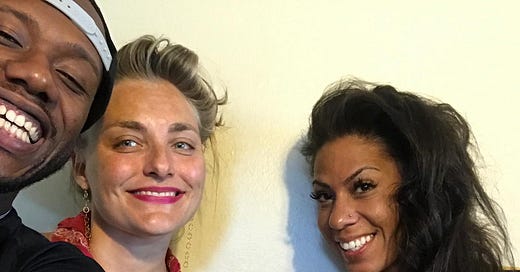Premieres June 17th on all VOD platforms.
Describe the film for us in your own words.
JEANNETTE’s a film about a woman fighting to feel whole again after surviving the unthinkable. The film is purposefully set in the afterlife of the Pulse massacre. Jeannette was at the club that night, but the event itself is not the subject of the film. Rather, everyday life and what it takes to rebuild, mother, stand on your own two feet and bring your community along is the fabric of the film. Jeannette provides incredible insight into resilience and a depth of strength. Ultimately, this is a film about healing and love.
What drew you to this story?
Jeannette pulled me into this story. She’s irrepressible, dynamic and passionate. She’s also hilarious and goofy. The film asks the question — what do we do with our trauma, and for Jeannette, that answer always includes extending an outstretched hand to others. How do we lift each other up when we’re at our lowest? How do we create communities of care and learn to give and accept help with equal grace? I document passionate people driven to heal the maladies of society with the hope that their example is contagious. Jeannette inspires me.
What do you want people to think about?
This film explores a period of time when cameras are typically packed up — after the news trucks depart. In focusing my lens on the aftermath, I was interested in inviting an audience to experience Jeannette’s world and the tenderness of grief with care and empathy. And in experiencing this, ask — how do we do a better job of helping to keep one another safe? How do we ignite shared social responsibility?
What was the biggest challenge in making this?
This was a beautiful and challenging film to make. We had just started shooting the film in Orlando, where Jeannette lives and Hurricane María hit Puerto Rico. Jeannette’s sister lives there and she had been going to the island for a series of workshops in the aftermath of Pulse. She called me and said: “We have to go. I have to go help.” And so we did. We got a generator and went. We were able to be with her family and she made a difference. Our crew was tiny on a shoot like that. There were three of us. We brought more supplies for folks on the ground than gear.
What was the development process? How did you get green lit?
Financing a film like this is always going to be a challenge. The film would not exist without a few key champions: four women producers and funders who had my back the entire way. They believed in me and the film. In addition, we had dozens of supporters — friends, colleagues and family who contributed through our fiscal sponsor, Film Independent. It was grassroots crowdfunding. And Jeannette’s community was pillar of the film — helping to support every part of the process, which is an incredible testament to Jeannette.
What inspired you to become a storyteller?
I came to filmmaking through art. I grew up in Philly, the daughter of a painter, making things, writing, reading voraciously and watching films. In my first year of college, I took a production course centered on issues of representation. When I showed my first film to the class, a film centered on my experience of sexual violence, the class cried. It was in that moment — in discovering the emotional power of cinema — that I knew I wanted to be a filmmaker.
What advice do you have for other female creatives?
I think my best advice is to band together. We’re in a tough moment in the industry right now. Most people are struggling and to get through this, we need to support each other, each other’s work and visions. Help get other people’s work off the ground. We have to push the stories that matter forward together.
Name your favorite woman directed film and why.
I don’t have a single favorite film and so many of my favorites are directed by women, but I love 35 SHOTS OF RUM by Claire Denis. It’s tender and beautiful. I would rewatch it any day.




Very inspiring! Support each other is key